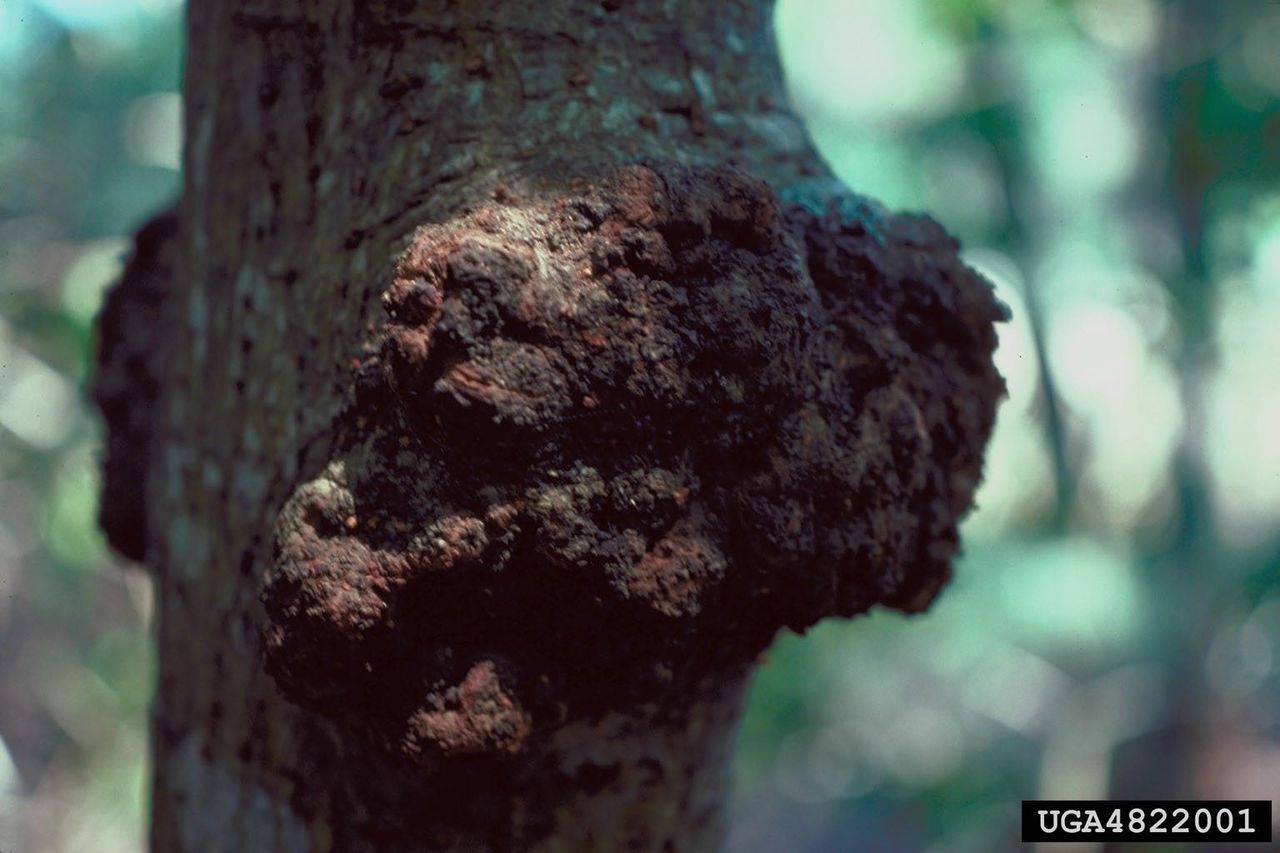Canker Of Eucalyptus Trees – How To Treat A Eucalyptus Tree With Canker

In areas of the world where eucalyptus has been cultivated as an exotic in plantations, the deadly eucalyptus canker disease can be found. Canker of eucalyptus is caused by the fungus Cryphonectria cubensis, and although the fungus is occasionally found in eucalyptus in Australia where the tree is native, is it not considered to be a serious problem there. However, in other regions where the tree is cultivated, such as Brazil and India, losses of eucalyptus trees with canker can be devastating.
Symptoms of Eucalyptus Canker Disease
Canker of eucalyptus was first identified in South Africa in 1988. Eucalyptus canker disease kills young trees in their first two years of life by girdling the stems at the base. The girdled trees wilt and in hot, dry summers, often die suddenly. Those that do not die immediately often have cracked bark and swollen bases. Initial symptoms of eucalyptus trees with canker is defoliation followed by the formation of cankers, infections of the bark and cambium. These necrotic lesions are produced by the breakdown of plant tissues resulting from the infection. Severe infection results in the death of the branches or even the crown. Eucalyptus trees are infected with canker through wounds when the asexual spores are dispersed by rain or in some regions wind and fostered by high temperatures. The extent to which the tree responds to the canker fungus is related to environmental conditions resulting in water or nutritional stress and defoliation.
Cryphonectria Canker Treatment
The most successful cryphonectria canker treatment involves circumventing mechanical damage as much as possible and in the case of accidental wounding, sanitary protection of the wound. Several varieties of eucalyptus are more prone to infection. These include:
- Eucalyptus grandis
- Eucalyptus camaldulensis
- Eucalyptus salign
- Eucalyptus tereticornis
Avoid planting these species in areas of eucalyptus production combined with climate conditions of extreme heat and heavy rains. E. urophylla seems to have a higher tolerance to the infection and would be a better option for planting.
Gardening tips, videos, info and more delivered right to your inbox!
Sign up for the Gardening Know How newsletter today and receive a free copy of our e-book "How to Grow Delicious Tomatoes".

Amy Grant has been gardening for 30 years and writing for 15. A professional chef and caterer, Amy's area of expertise is culinary gardening.
-
 Why Are My Seedlings Wilting? 6 Common Causes – And How To Save Them
Why Are My Seedlings Wilting? 6 Common Causes – And How To Save ThemWilted seedlings are a definite sign that something is not right. Learn how to diagnose the problem and bring baby plants back from the brink.
By Teo Spengler
-
 Bugged About Strawberry Pests? 6 Common Pests, Plus How To Protect Your Precious Strawbs
Bugged About Strawberry Pests? 6 Common Pests, Plus How To Protect Your Precious StrawbsStrawberry plants looking a little under the weather and not sure why? Check to make sure they haven’t come a-cropper to one of these classic strawberry pests
By Tonya Barnett
